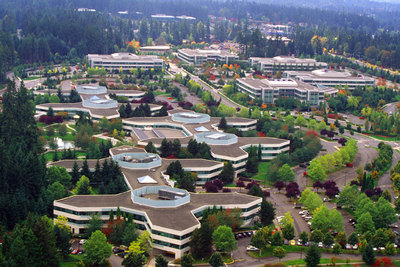 |
Microsoft Main Campus, Redmond, Wash., USA
Photo: Microsoft |
| |
Published: May 17, 2010
By Bob Muglia, President, Server & Tools Business at Microsoft
We don’t often think about how complex life really is.
Take the relatively simple task of commuting to and from work: it is, in fact, a complicated interplay of variables such as weather, train delays, accidents, traffic patterns, road construction, etc.
You can however, take steps to shorten your commute – using a good, predictive understanding of a few of these variables.
In fact, you probably are already taking these inputs and instinctively building a predictive model that you act on daily to get to your destination more quickly.
Now, when we apply the same method to very complex tasks, this modeling approach becomes much more challenging.
Recent world events clearly demonstrated our inability to process vast amounts of information and variables that would have helped to more accurately predict the behavior of global financial markets or the occurrence and impact of a volcano eruption in Iceland.
To make sense of issues like these, researchers, engineers and analysts create computer models of the almost infinite number of possible interactions in complex systems.
But, they need increasingly more sophisticated computer models to better understand how the world behaves and to make fact-based predictions about the future. And, to do this, it requires a tremendous amount of computing power to process and examine the massive data deluge from cameras, digital sensors and precision instruments of all kinds.
This is the key to creating more accurate and realistic models that expose the hidden meaning of data, which gives us the kind of insight we need to solve a myriad of challenges.
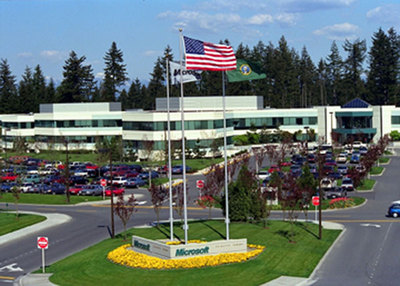 |
Main entrance to the Microsoft Redmond Campus.
Photo: Microsoft |
| |
We have made great strides in our ability to build these kinds of computer models, and yet they are still too difficult, expensive and time consuming to manage.
Today, even the most complicated data-rich simulations cannot fully capture all of the intricacies and dependencies of the systems they are trying to model.
That is why, across the scientific and engineering world, it is so hard to say with any certainty when or where the next volcano will erupt and what flight patterns it might affect, or to more accurately predict something like a global flu pandemic.
So far, we just cannot collect, correlate and compute enough data to create an accurate forecast of the real world.
But this is about to change.
Innovations in technology are transforming our ability to measure, monitor and model how the world behaves.
The implication for scientific research is profound, and it will transform the way we tackle global challenges like health care and climate change.
It will also have a huge impact on engineering and business, delivering breakthroughs that could lead to the creation of new products, new businesses and even new industries.
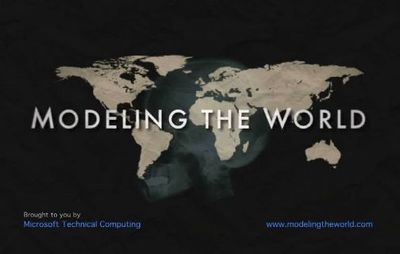 |
| Photo: Microsoft |
| |
I want you to be the first to know about a new effort focused specifically on empowering millions of the world’s smartest problem solvers.
Today, I am happy to introduce
Microsoft’s Technical Computing initiative.
Our goal is to unleash the power of pervasive, accurate, real-time modeling to help people and organizations achieve their objectives and realize their potential.
We are bringing together some of the brightest minds in the technical computing community across industry, academia and science at www.modelingtheworld.com to discuss trends, challenges and shared opportunities.
New advances provide the foundation for tools and applications that will make technical computing more affordable and accessible where mathematical and computational principles are applied to solve practical problems.
One day soon, complicated tasks like building a sophisticated computer model that would typically take a team of advanced software programmers months to build and days to run, will be accomplished in a single afternoon by a scientist, engineer or analyst working at the PC on their desktop.
And as technology continues to advance, these models will become more complete and accurate in the way they represent the world.
This will speed our ability to test new ideas, improve processes and advance our understanding of systems.
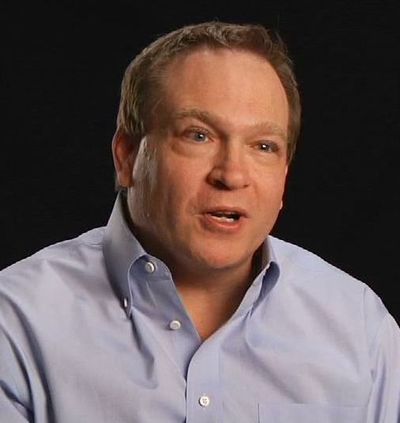 |
Bob Muglia, president, Server & Tools Business at Microsoft.
Photo: Microsoft |
| |
Our technical computing initiative reflects the best of Microsoft’s heritage.
Ever since
Bill Gates articulated the then far-fetched vision of “a computer on every desktop” in the early 1980’s, Microsoft has been at the forefront of expanding the power and reach of computing to benefit the world.
As someone who worked closely with
Bill for many years at
Microsoft, I am happy to share with you that the passion behind that vision is fully alive at
Microsoft and is carried out in the creation of our
new Technical Computing group.
Enabling more people to make better predictions
We have seen the impact of making greater computing power more available firsthand through our investments in
high performance computing (HPC) over the past five years.
Scientists, engineers and analysts in organizations of all sizes and sectors are finding that using distributed computational power creates societal impact, fuels scientific breakthroughs and delivers competitive advantages.
For example, we have seen remarkable results from some of our current customers:
•
Malaria strikes 300,000 to 500,000 people around the world each year. To help in the effort to eradicate malaria worldwide, scientists at Intellectual Ventures use software that simulates how the disease spreads and would respond to prevention and control methods, such as vaccines and the use of bed nets.
Technical computing allows researchers to model more detailed parameters for more accurate results and receive those results in less than an hour, rather than waiting a full day.
•
Aerospace engineering firm, a.i. solutions, Inc., needed a more powerful computing platform to keep up with the increasingly complex computational needs of its customers:
NASA, the Department of Defense and other government agencies planning space flights.
To meet that need, it adopted technical computing. Now, a.i. solutions can produce detailed predictions and analysis of the flight dynamics of a given spacecraft, from optimal launch times and orbit determination to attitude control and navigation, up to eight times faster.
This enables them to avoid mistakes in any areas that can cause a space mission to fail and potentially result in the loss of life and millions of dollars.
•
Western & Southern Financial Group faced the challenge of running ever larger and more complex actuarial models as its number of policyholders and products grew and regulatory requirements changed.
The company chose an actuarial solution that runs on technical computing technology.
The solution is easy for the company’s IT staff to manage and adjust to meet business needs.
The new solution helps the company reduce modeling time by up to 99 percent – letting the team fine-tune its models for more accurate product pricing and financial projections.
Our Technical Computing direction
Collaborating closely with partners across industry and academia, we must now extend the reach of technical computing even further to help predictive modelers and data explorers make faster, more accurate predictions.
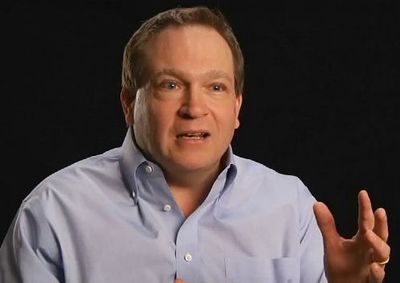 |
Bob Muglia, president, Server & Tools Business at Microsoft, discusses the challenges and goals of Microsoft’s Technical Computing initiative to help people and organizations realize their full potential through the power of pervasive, accurate, real-time modeling.
Photo: Microsoft |
| |
As we build
the Technical Computing initiative, we will invest in three core areas:
1. Technical computing to the cloud: Microsoft will play a leading role in bringing technical computing power to scientists, engineers and analysts through the cloud. Existing high- performance computing users will benefit from the ability to augment their on-premises systems with cloud resources that enable ‘just-in-time’ processing. This platform will help ensure processing resources are available whenever they are needed—reliably, consistently and quickly.
2. Simplify parallel development: Today, computers are shipping with more processing power than ever, including multiple cores, but most modern software only uses a small amount of the available processing power. Parallel programs are extremely difficult to write, test and trouble shoot. However, a consistent model for parallel programming can help more developers unlock the tremendous power in today’s modern computers and enable a new generation of technical computing. We are delivering new tools to automate and simplify writing software through parallel processing from the desktop… to the cluster… to the cloud.
3. Develop powerful new technical computing tools and applications: We know scientists, engineers and analysts are pushing common tools (i.e., spreadsheets and databases) to the limits with complex, data-intensive models. They need easy access to more computing power and simplified tools to increase the speed of their work. We are building a platform to do this. Our development efforts will yield new, easy-to-use tools and applications that automate data acquisition, modeling, simulation, visualization, workflow and collaboration. This will allow them to spend more time on their work and less time wrestling with complicated technology.
Thinking bigger
There is so much left to be discovered and so many questions yet to be answered in the fascinating world around us. We believe the technical computing community will show us that we have not seen anything yet.
Imagine just some of the breakthroughs this community could make possible:
• Better predictions to help improve the understanding of pandemics, contagion and global health trends.
• Climate change models that predict environmental, economic and human impact, accessible in real-time during key discussions and debates.
• More accurate prediction of natural disasters and their impact to develop more effective emergency response plans.
With an ambitious charter in hand, this new team is ready to build on our progress to-date and execute
Microsoft’s technical computing vision over the months and years ahead.
We will steadily invest in the right technologies, tools and talent, and work to bring together the technical computing community.
I invite you to visit
www.modelingtheworld.com today.
We welcome your ideas and feedback.
I look forward to making this journey with you and others who want to answer the world’s biggest questions, discover solutions to problems that seem impossible and uncover a host of new opportunities to change the world we live in for the better.
Bob
http://www.microsoft.com/mscorp/execmail/2010/05-17HPC.mspx
Video
Bob Muglia, president, Server & Tools Business at Microsoft, discusses the challenges and goals of Microsoft’s Technical Computing initiative to help people and organizations realize their full potential through the power of pervasive, accurate, real-time modeling.
http://www.modelingtheworld.com/video/mp4/BobMuglia.mp4

